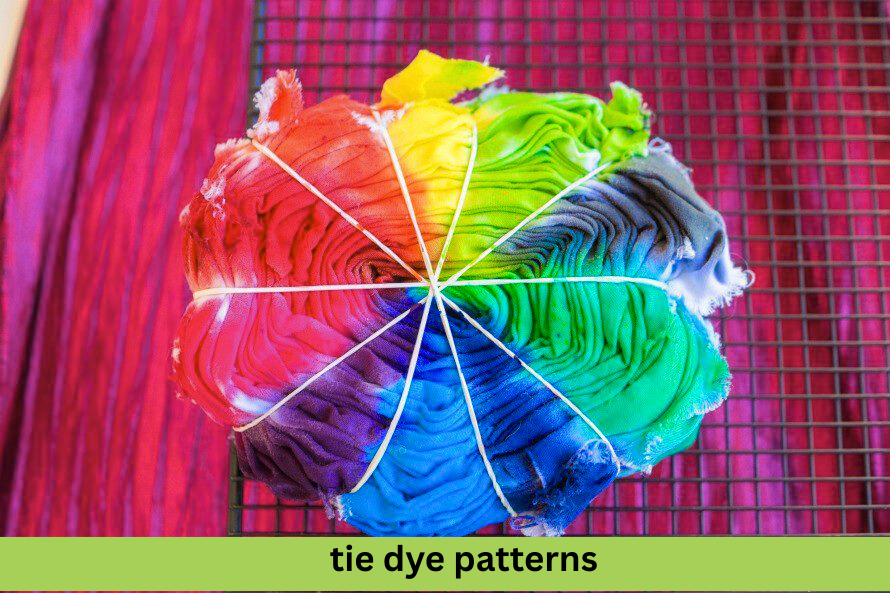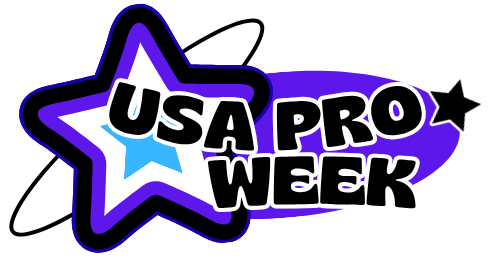Tie Dye has captivated hearts for decades, blending creativity, colour, and craft into one timeless technique. At its essence, Tie Dye is a form of resist-dyeing, where fabric is tied, folded, twisted, or bound before being coloured, resulting in patterns that are as unique as the person creating them. What makes Tie Dye particularly fascinating is its unpredictability; even if two people follow the same technique, the final designs are rarely identical. This quality allows every garment or textile to become a one-of-a-kind masterpiece. Tie Dye patterns range from simple spirals and stripes to complex mandalas and crumpled nebula-like designs, offering endless possibilities for experimentation. Beyond its visual appeal, Tie Dye has a deep history and cultural significance, linking ancient craftsmanship with modern fashion trends, making it both a craft and a statement of personal expression.
The Origins and History of Tie Dye Patterns
The story of Tie Dye Patterns spans centuries and continents. Ancient civilizations in Asia and Africa employed resist-dyeing techniques, often using natural indigo and plant-based dyes to create intricate textiles for ceremonial and everyday use. In India, the Bandhani technique involved plucking small portions of fabric and binding them before dyeing, producing detailed, dotted patterns. Similarly, Japan developed Shibori, a method involving folding, stitching, and clamping fabric to achieve sophisticated geometric and organic designs. Tie Dye gained global recognition in the 1960s and 1970s in the United States, becoming a symbol of counterculture, freedom, and self-expression. Bright spirals and psychedelic patterns adorned T-shirts, dresses, and accessories, capturing the spirit of an era defined by rebellion and creativity. Today, Tie Dye continues to evolve, merging traditional techniques with modern aesthetics, reflecting the cultural and artistic values of each generation.
The Creative Potential of Tie Dye Patterns
One of the most appealing aspects of Tie Dye Patterns is its limitless creative potential. Every fold, twist, or binding decision impacts the resulting pattern, meaning no two pieces are ever exactly alike. This opens the door for experimentation with colour combinations, fabric types, and folding techniques. The swirl pattern, one of the most iconic designs, requires pinching the centre of the fabric and twisting it like a cinnamon roll before adding colour in wedges. Bullseye patterns are created by gathering a section of fabric and wrapping rubber bands at intervals, while scrunch or crumple techniques produce a more abstract, organic effect reminiscent of galaxies or nebulae. Modern Tie Dye enthusiasts often combine multiple techniques in one garment, creating intricate, layered patterns that are visually stunning. This creative freedom makes Tie Dye an art form that is as much about the process as the final product, offering satisfaction and joy to makers of all skill levels.
Tie-Dye Artist / Enthusiast Bio
| Attribute | Details |
|---|---|
| Name | Alex Morgan (example) |
| Age | 28 years |
| Height | 5’8″ (173 cm) |
| Family | Parents: John & Lisa Morgan; Siblings: 1 sister |
| Net Worth | Approx. $120,000 (from DIY workshops, online tutorials, and sales) |
| Physical Appearance | Medium build, brown hair, hazel eyes, often seen in colorful tie-dye attire |
| Social Media | Instagram: @AlexTieDyeWorld, YouTube: Alex Tie-Dye Tutorials, TikTok: @tie_dye_alex |
| Occupation | Professional Tie-Dye Artist and DIY Instructor |
| Experience | 7 years in tie-dye creation, teaching workshops, and online content |
| Specialization | Spiral, mandala, crumple, and modern minimalist tie-dye patterns |
The Benefits of Creating Tie Dye Patterns
Beyond its aesthetic appeal, Tie Dye Patterns offers several practical and personal benefits. Firstly, it encourages creativity and self-expression, allowing individuals to explore colour theory, pattern design, and artistic experimentation. It is also an accessible form of art, suitable for all ages and skill levels, from children making their first colourful T-shirts to professional designers creating runway-worthy garments. Tie Dye also promotes sustainability by allowing people to upcycle old or plain garments into vibrant new pieces, reducing waste and extending the life of clothing. From a therapeutic perspective, the process of folding, binding, and applying dye can be meditative and relaxing, helping reduce stress and encouraging mindfulness. Finally, Tie Dye patterns are versatile and adaptable, suitable for fashion, home décor, and even art installations, making them a practical and enjoyable craft to explore.
Materials, Techniques, and Tips for Perfect Patterns
Achieving a successful Tie Dye Patterns pattern requires attention to materials and technique. Natural fabrics such as cotton, silk, and linen absorb dyes best, producing vibrant colours and defined patterns. Fibre-reactive dyes are highly recommended because they bond effectively with natural fibres, creating long-lasting, vivid designs. The binding method determines how much of the fabric resists the dye: tighter bindings produce more white space and sharper contrasts, while looser folds yield softer, blended designs. Preparation is key; washing the fabric to remove sizing, pre-soaking in soda ash (for fibre-reactive dyes), and setting up a well-protected workspace all contribute to better results. After dyeing, allowing the fabric to sit for several hours or overnight ensures that the colours fully penetrate the fibres. Rinsing and washing separately prevents colour bleeding and preserves the vibrancy of the final pattern. These steps may seem meticulous, but they are essential for achieving professional-quality results.

Modern Tie Dye Trends
Tie Dye Patterns continues to evolve, reflecting contemporary fashion, home décor, and craft trends. Monochromatic and pastel Tie Dye designs are gaining popularity for their subtle, sophisticated aesthetic, offering a more refined alternative to the traditional rainbow palette. Ice-dye techniques, where powdered dye is applied over melting ice, create soft, flowing patterns reminiscent of watercolor paintings. Reverse Tie Dye, which removes colour from darker fabrics using bleach or discharge agents, has also become a modern favourite, allowing designers to experiment with contrast and negative space. High-end fashion designers are integrating Tie Dye into couture garments, combining traditional resist-dye techniques with luxurious fabrics to create wearable art. Social media platforms like Instagram and TikTok have further fueled innovation, providing a space for makers to share tutorials, tips, and new folding or colouring techniques, keeping Tie Dye relevant and exciting for all ages.
Challenges and Considerations
While Tie Dye Patterns is fun and rewarding, it comes with certain challenges. Colour bleeding and fading are common issues if dyes are not properly fixed, or if fabrics are incompatible. Synthetic fabrics such as polyester often do not absorb dye as well, resulting in dull or uneven patterns. For those creating Tie Dye for production or resale, maintaining consistency across multiple pieces can be difficult, as slight variations in folding or dye application drastically affect the outcome. Additionally, safety considerations are important when working with dyes and bleach, as improper handling can pose risks to health and the environment. Understanding these limitations and planning accordingly ensures both safe and successful Tie Dye projects.
Getting Started with Tie Dye
Starting your Tie Dye Patterns journey is simple and rewarding. Begin with a plain, natural-fibre garment such as a cotton T-shirt or linen scarf. Pre-wash to remove any sizing, and set up a protected workspace with gloves and plastic coverings. Decide on the pattern you want to create—spiral, bullseye, stripes, or scrunch—and fold or bind accordingly. Prepare your dyes according to manufacturer instructions and apply carefully, considering where you want colour saturation and where you want negative space. Allow the garment to set for several hours, then rinse, wash, and dry. Experimentation is key: adjusting folds, combining techniques, or trying different colour palettes will teach you what works best and help you develop your personal Tie Dye style.
Tie Dye Patterns as a Form of Personal Expression
Ultimately, Tie Dye is more than just a craft—it’s a form of self-expression. Each pattern, colour choice, and fold represents a decision, a creative impulse, and an individual perspective. The unpredictability of the process adds to its charm, celebrating imperfection and originality. Tie Dye can be worn, displayed, or gifted, creating a tangible connection between the maker and the recipient. It has the power to turn ordinary clothing or fabric into extraordinary statements of personality and style. For children, adults, and professional designers alike, Tie Dye offers a chance to explore colour, texture, and pattern in ways that are both playful and deeply meaningful.
Conclusion
Tie Dye patterns embody a unique combination of history, artistry, and personal creativity. From ancient techniques in India and Japan to the bold spirals of the 1960s, and now to modern minimalist, ice-dye, and couture applications, Tie Dye continues to evolve while remaining a vibrant, accessible art form. The magic of Tie Dye lies in its unpredictability, the uniqueness of each piece, and the satisfaction of creating something with your own hands. Whether you are a beginner experimenting with colours, a hobbyist exploring textures, or a designer bringing sophistication to an ancient craft, Tie Dye offers endless possibilities for expression, beauty, and joy. By embracing its history, techniques, and modern trends, anyone can explore this captivating art and leave their own colourful mark on the world.
FAQs
1. What is a tie-dye pattern?
A tie-dye pattern is a design created by folding, twisting, or binding fabric before applying dye, which resists certain areas to form unique visuals. Each piece is one-of-a-kind due to the variations in technique and dye application.
2. Which fabrics work best for tie-dye?
Natural fabrics like cotton, linen, and silk absorb dyes better and produce brighter, longer-lasting colours. Synthetic fabrics usually do not hold dye as well, resulting in less vibrant patterns.
3. Can tie-dye be done at home easily?
Yes, tie-dye is beginner-friendly and requires minimal materials like plain fabric, dye, and rubber bands. Simple patterns like spirals or stripes are ideal for first-time projects.
4. How do I prevent tie-dye colours from bleeding?
Use fibre-reactive dyes and pre-treat fabrics with soda ash to fix colours. After dyeing, rinse thoroughly and wash separately to maintain vibrancy.
5. What are the latest trends in tie-dye patterns?
Modern trends include monochromatic palettes, ice-dye techniques, and reverse tie-dye using bleach. Designers also experiment with couture fabrics and subtle, minimalist designs.


